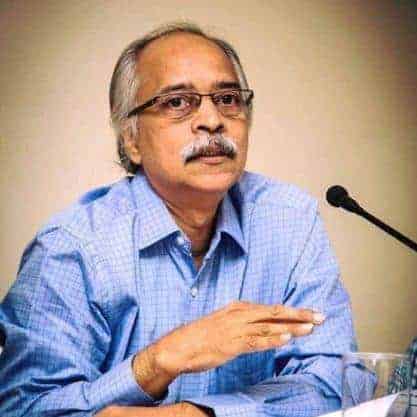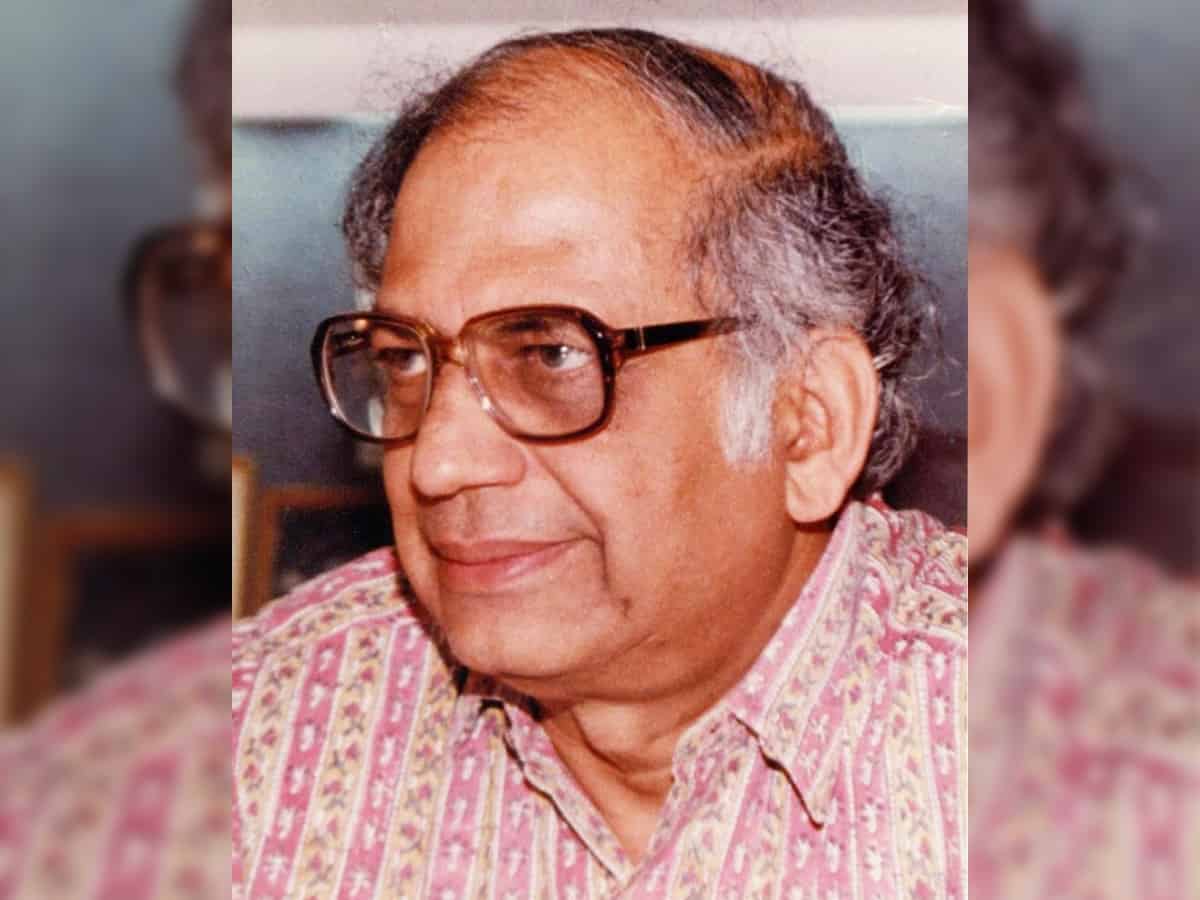
In November 2015, Dr Pushpa Mitra Bhargava, well-known scientist, institution builder and science populariser, caused a sensation by returning his Padma Bhushan (1986) citing the climate in the country was of “very strong fear” and it was “against rationality, against reason and against scientific temper”.
A biologist of international repute and a rationalist, Dr Bhargava’s was for decades, a strident voice against issues, government decisions and public matters that he strongly believed were against people’s interest.
On February 22, this Ajmer-born who made Hyderabad his permanent home and was fondly called as PMB would have turned 94. He passed away in August 2017 and in his death, a strong voice in Indian scientific community fell silent.
A Hyderabadi, whose contribution is immense
In post Independence India’s Science and Technology development, PM Bhargava’s contribution as one of the architects of biology and biotechnology will be remembered.
The present Director of the Centre for Cellular and Molecular Biology (CCMB), Dr Rakesh Mishra recalled, “Dr Bhargava was a proponent of good scientific temper and never stepped back from speaking up against any claim not backed by scientific evidence,” at the 5th Founder’s Day event on Monday in Hyderabad.
Dr Bhargava founded the CCMB in 1987, with the then Prime Minister, Rajiv Gandhi inaugurating it in the midst of a galaxy of scientists, including 6 Nobel laureates, among whom was Dr Francis Crick, who along with Dr Watson had decoded the ‘Double Helix’ structure of the human DNA ( Deoxyribonucleac acid) in the 1950s.
By a strange turn of events, a young Bhargava had landed in Hyderabad with the Regional Research Laboratory (RRL), led by Dr Hussain Zaheer in the mid 1950s. Thus began his tryst with the ‘City of Nawabs’, which became his home.
It will be no exaggeration, to state that in the next 60 years, PMB played a significant role in turning Hyderabad into a ‘Science City’, with his multi-faceted contributions. There were other giants Suri Bhagavantham in defence, Dr A S Rao in Electronics, Dr Vainu Bappu in Astronomy etc., who laid the foundations for the city’s prominence by aiding in setting up of successful national institutes.
The CCMB is the ‘crown jewel’ among his legacies. Then, along with Dr Lalji Singh, he laid the foundations for the CDFD and its off shoot, the LaCoNeS, which uses the DNA fingerprinting technique in wildlife conservation studies. All three have attained international recognition.
His passion for Hyderabad was so deep that Dr PMB would insist that events happened in the City and not just New Delhi or Bengaluru. He brought Nobel Laureates, international meets and also strove for spreading scientific temper. He would often compare Hyderabad to Israel (similar in geographical size) and state that similar high quality science and technology achievements should be replicated here.
Being a rationalist and forthright in expression Dr Bhargava often courted trouble. In the early 1980s, he conceived and set up an exhibition called ‘The Method of Science’, with the help of Dr M R Das, Dr D Balasubramanian etc. His portrayal of Homeopathy as a ‘pseudo medicine’, invited the wrath of its practitioners. Consequently, the exhibition had to be closed. It was gifted to the State Central Library in Afzalganj.
Post his retirement from the CCMB in 1992, Dr Bhargava along with concerned medical professionals like C Dayakar Reddy, Dr Kakarala Subba Rao etc. founded MARCH (Medically Aware and Responsible Citizens of Hyderabad), which highlighted ethical and moral issues surrounding scientific developments and practises.
The efforts of MARCH led to the formulation of guidelines for diagnostic and testing labs, especially the pre-natal tests. It’s still active, but much truncated in activities now.
Dr Bhargava also turned a crusader against pseudo science. His efforts to expose the claims like Ramar Pillai’s converting herbs into petrol at a public demonstration in Nizam College grounds in 1995 and opposing introduction of Astrology in universities raised public awareness. He also turned a bitter critic of Bt Cotton.
Along with Prof Satish Dhawan, Abdur Rahaman, and De A K Paintal, he set up the Society for the Promotion of Scientific temper. He was also active in the Jana Vignana Vedhika, which promoted scientific temper and tried to debunk superstitions in Andhra Pradesh.
CCMB Innings
Known to be a close confidante of the Nehru-Indira Family on Science matters, Dr PMB was a key participant in several development projects in science in the country over half a century. This clout helped him to carve out the CCMB from the RRL, with a whopping budget of Rs 48 crore during the mid-1980s and turn it into a 24/7, world class, modern biology lab, which was an envy of researchers from the developed countries too then.
Though, Dr PMB and the CCMB were often question on their achievements and return on investment of public money, the breakthrough achieved in the development and increased use of DNA fingerprinting (deoxyribonucleac acid), pioneered by Dr Lalji Singh and team gave it good visibility. Subsequently, several groups have been able to make a mark in molecular biology and basic research.
If Nobel laureates graced the CCMB frequently, Dr PMB’s taste for art brought in the renowned MF Hussain, who painted a mural (unfinished) and held a workshop for scientists. The CCMB had Surya Prakash, the well known painter from Hyderabad as ‘an artist in Lab’ position designing the interiors. Finally, the CCMB also boasted of a permanent exhibition of paintings in its premises.
A strong votary of basic science research Dr Bhargava hit national headlines with his run in against another famous Hyderabadi, Dr Abid Hussain. The former IAS and Indian Ambassador to US, Dr Abid Hussain led Committee on CSIR ( Council of Scientific Industrial Research) had recommended that all the national labs should earn about one third of their revenues from consultancy and also focus on Industry and application research. Dr PMB led a spirited counter to argue the importance of funding basic research to achieve self reliance.
That he did not totally shy away from applied research is borne out by the support CCMB lent to incubation of Shantha Biotech by KI Varaprasad Reddy, which brought to the market the first indigenous, hepatitis B vaccine. Similarly his support meant a lot to Sun Pharma, now a global Pharma major and Sanghi Industries.
The early days
Dr Bhargava was born in Ajaymeru in Rajasthan on 22nd February 22, 1928, to Ram Chandra Bhargava, a medical doctor, and Gayatri Bhargava.
Interestingly, he was admitted directly into Class 9 in Varanasi, as his grandfather home-schooled him until about the age 10. He completed his Master’s in organic chemistry from Queens College, Uttar Pradesh and joined Lucknow University and by the age of 21, he was armed with a PhD in synthetic chemistry, according to Research Matters.
Somasekhar Mulugu, former Associate Editor & Chief of Bureau of The Hindu BusinessLine, is a well-known political, business and science writer and analyst based in Hyderabad.

